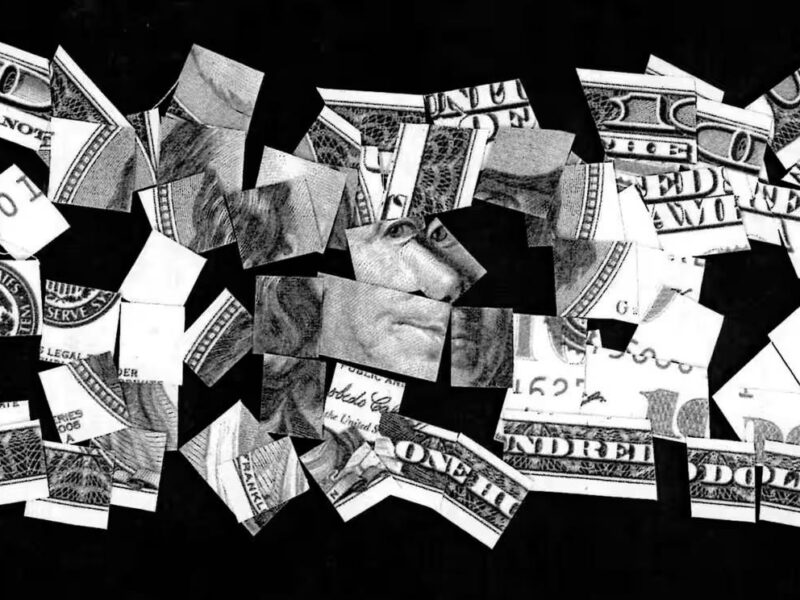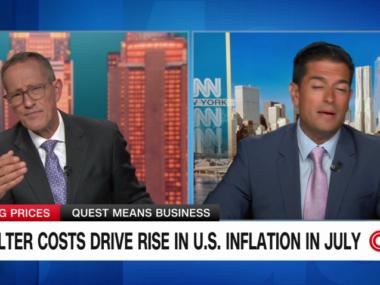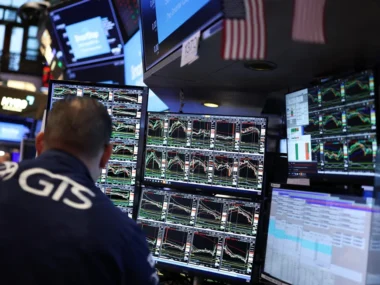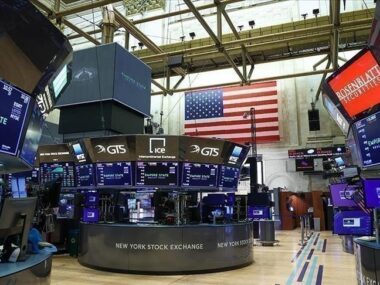According to a think tank report,’resounding data’ reveals that corporations maintain high prices even as their inflationary expenses fall.
According to a new analysis, “resounding evidence” suggests that high corporate profits are a major source of continued inflation, with corporations maintaining high prices even when their inflationary costs fall.
The progressive thinktank Groundwork Collaborative created the analysis, which revealed that corporate profits accounted for around 53% of inflation in the second and third quarters of last year. Profits accounted for only 11% of price rise in the 40 years before the epidemic, according to the analysis.
Consumer prices climbed by 3.4% during the past year, while producer input costs increased by only 1%, according to the authors’ estimations, which were based on Bureau of Economic Analysis and National Income and Product Accounts statistics.
“Costs have come down substantially, and while corporations were quick to pass on their increased costs to consumers, they are surprisingly less quick to pass on their savings to consumers,” Liz Pancotti, a Groundwork strategic advisor, said.
Since pandemic inflation spiked in 2021, there has been a heated dispute regarding its causes. Many progressive economists blamed rising prices on corporate profits – or “greedflation” – and supply chain concerns, while their more conservative counterparts cited government stimulus spending and high wages.
The report’s authors combed business earnings calls and discovered executives bragging to shareholders about maintaining high prices and expanding profit margins as input costs fall.
The findings come as the Federal Reserve has raised interest rates to the highest level in 20 years. The research seriously questions the need for more interest rate hikes, instead advocating for stronger laws to curb “corporate profiteering”.
Prices climbed in 2021 as labor expenses increased and supply chain shocks from the pandemic and the Ukraine war disrupted shipping traffic and called energy sources into question. However, in many cases, these concerns have been resolved or are improving, and the job market has stabilized. Many commodity and service producers’ prices have actually declined, according to the report.
over 60% of the decrease in important goods and services inputs was driven by huge drops in energy costs, such as jet fuel and diesel fuel, while transportation and warehousing costs have declined by over 4% from the June 2022 high.
Nonetheless, prices remain high. According to the report, consumers continue to pay approximately 25% more for food.
Corporations keep prices high by capitalizing on cost shocks generated by events such as the Ukraine war and coordinating price increases, according to Isabella Weber, an economist at the University of Massachusetts Amherst who was not involved in the study.
According to Weber, the shocks create an atmosphere in which firms feel confident raising prices because they expect their competitors to do the same.
“This is a form of implicit collusion,” she went on to say. “Firms don’t even have to talk to one other to realize that a cost shock is an excellent moment to raise prices. However, as costs decline, price-setting corporations have little incentive to lower prices.
If no firms start a price war, Weber explained, companies will “hold the line” on prices and widen margins. She cited food processors as one example.
The article focuses on the diaper industry, where Procter & Gamble and Kimberly-Clark hold 70% of the domestic market. Diaper prices have risen by more than 30% since 2019, from an average of $16.50 to about $22.
The hike was fueled in part by an increase in commodities such as wood pulp, which is a major component of diapers. Wholesale wood pulp costs increased by 87% between January 2021 and January 2023, but fell by 25% last year.
However, despite reducing expenses, diaper prices have not decreased, according to the authors. Groundwork studied earnings calls and saw executives at both firms talking about increasing profit margins as input costs fell. According to Kimberly Clark officials, a decline in inputs accounted for around one-third of the company’s revenues.
P&G executives stated in their July results call that they expect $800 million in windfall profits due to reduced input costs, implying that they will not lower pricing.
Meanwhile, workers aren’t faring as well: corporate profits as a share of national income have risen by around 29%, but workers’ share of corporate earnings remains lower than pre-pandemic levels.
The Biden administration has made steps to tighten supply chains, Pancotti highlighted, and Joe Biden recently urged firms to quit “gouging” customers as input costs fall. However, she and Weber advocated for stronger action, citing other countries that have implemented pricing controls.
In France, the government intervenes in price negotiations between merchants and producers. Carrefour, a grocery operator, pulled some PepsiCo products from its shelves earlier this month due to “unacceptable price increases” with the government’s approval.
In the absence of robust government action in pricing, Pancotti believes that the expiration of Trump’s corporate tax cuts in 2025 provides a chance to rein in firms through the tax system.
“We’ve decided as a country that we like to have very large, powerful corporations and we are OK with them being very profitable,” she went on to say. “We need to take a really hard look at how our tax code incentivizes corporate profiteering and ask: ‘Do we as a country want to do something about that?'”











